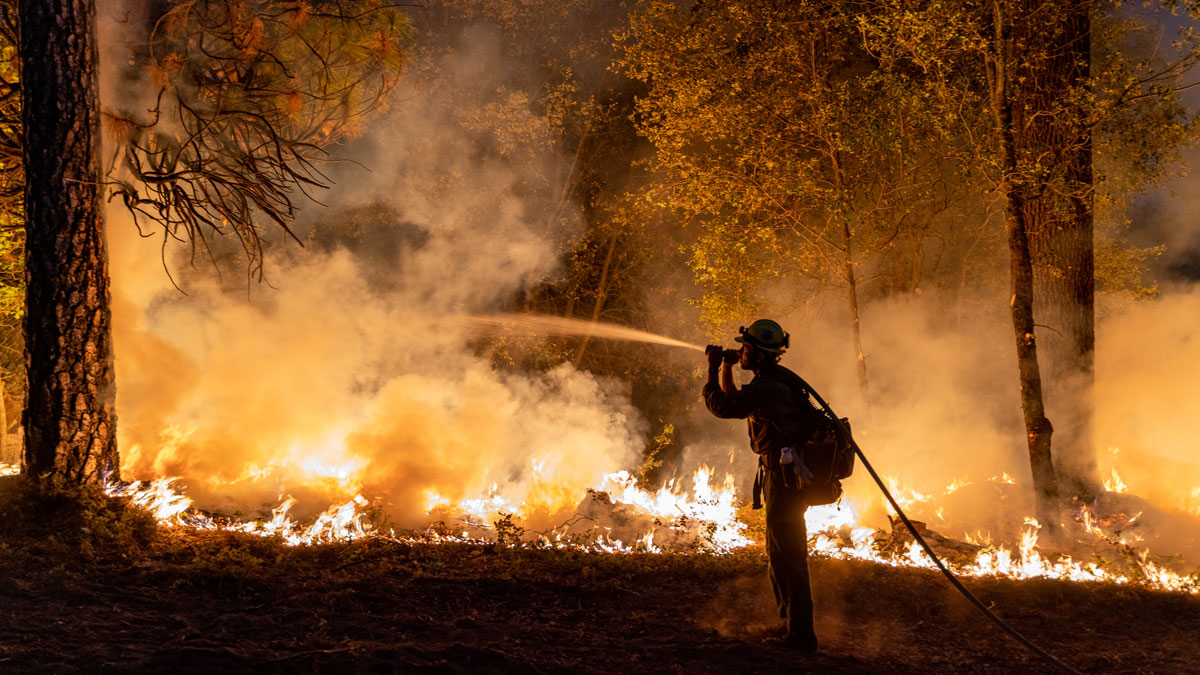Wildland firefighters battling record-setting blazes are noticing that the game is changing. Where crews once gained ground in the evening hours, when fires naturally die down, some on the front lines now say they often are facing a sustained battle. A new study published in Nature showed just how accurate these reports are, particularly in the western United States.
“I think most westerners 20 years ago might not have seen [nighttime] fire as something that they have to deal with, but things have obviously changed pretty substantially since 2000.”
“I think most westerners 20 years ago might not have seen [nighttime] fire as something that they have to deal with, but things have obviously changed pretty substantially since 2000,” said John Abatzoglou, a climatologist at University of California, Merced and one of the authors of the study.
California, among other states, has seen many of its largest recorded blazes in the past 2 decades. “It’s always on our minds,” said Abatzoglou, who lives in the foothills of the Sierra Nevada and has recently managed prescribed burns on his property to lower the risk of a future wildfire.
Fueling Fires
Wildfire is an equal-opportunity destructor; it encroaches on anything burnable in its path, whether that be dense forests, grasslands, or suburban neighborhoods. Fires do, however, burn faster through hot, parched landscapes.
“What matters is fuel moisture,” said Andy Chiodi, a climatologist at the University of Washington who was not involved in the study. “Think that you’re trying to light a fire.… If the sticks are soaking wet, it’s kind of hard to do that. If the kindling you have is superdry, lighting that fire is going to be much easier.”
“Now we have nights that aren’t acting as night.…The candle is burning at both ends.”
To get at fuel moisture, scientists often look at how much water is in the air. The vapor pressure deficit (VPD), a proxy for fuel moisture, measures the difference between how much water is in the air and how much it can hold—in other words, its saturation point. When VPD is high, the air is dry and plants release more water into the air and therefore become drier and more flammable.
In addition, the saturation point of air is strongly temperature dependent, so when temperatures go up, so does VPD. Hour-by-hour changes in temperature can drive the moisture content of thin plants like grasses and shrubs, which can lose a large percentage of their water over the course of a day. The plants gain back some of that moisture at night by pulling water from their roots, but as nights have gotten warmer over the past 3 decades, plants have become drier and therefore more flammable through the evening hours.
“Now we have nights that aren’t acting as night,” Abatzoglou said. “The candle is burning at both ends.”
Warmer Nights Mean Easier Burning
In the latest study, researchers paired satellite observations of hourly weather conditions around the world with fire detections to determine the VPD threshold above which various landscapes were likely to burn. They tracked how often the measured VPD was higher than the threshold over the past 40 years.
Although they found variations around the globe, the number of nighttime hours when landscapes are primed to burn increased by more than 33% since 1979, according to the study. Daytime burnable hours increased by more than 25%. The data also showed that the world is facing an average of five extra nights per year when VPD does not fall below the landscape-specific flammable threshold. And in the western United States, which has seen year after year of devastating fires, the number jumps to 11.
Although satellites are a great tool to gather data on large-scale trends, they give only a bird’s-eye view of wildfires, but going forward, scientists need to look at conditions at the scale of an individual fire, according to Chiodi. “There’s some disconnect between what we can sense from the satellite and what’s actually [happening] on the ground,” he said.
To figure out exactly what drives individual wildfires, scientists need real-time, up-close data about what a fire is doing and what is burning, Chiodi said. Both he and the study’s authors said that drones could help gather information in the future.
But living in a global climate that is more conducive to nighttime fires is a worrying development for already stretched resources. “Warm nights keep me up at night. And when there’s [fire], I’m doubly kept up at night,” Abatzoglou said.
—Jennifer Schmidt (@DrJenGEO), Science Writer

